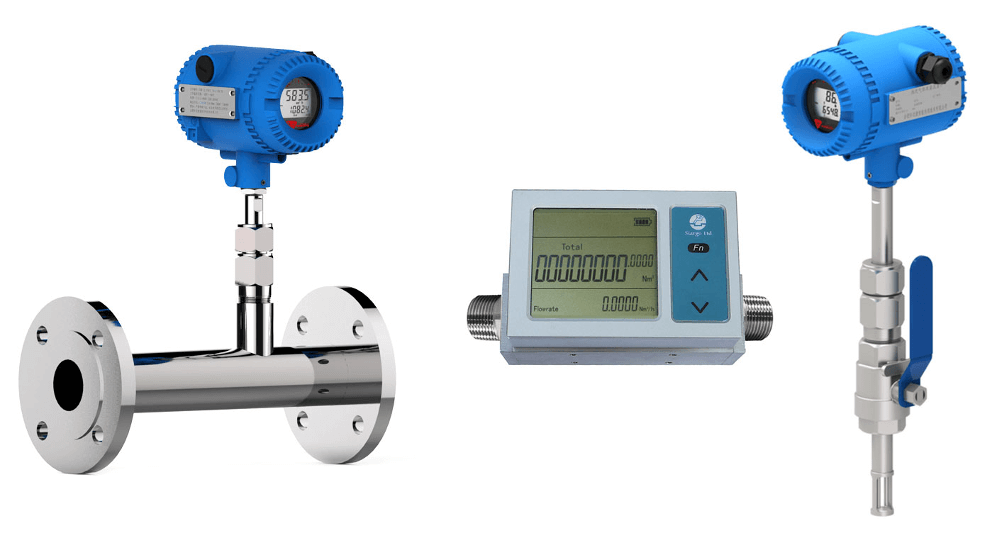Gas mass is a variable of utmost importance for most production processes. Moreover, measuring it is reliable as it’s not prone to the effects of temperature or pressure changes. A thermal mass flow meter is a specialized measurement instrument that measures gas heat course, and it has many uses.
You can use these handy devices thermal for any process or research requiring gas or heat flow measurement. Also, they come in handy when you need to make changes in a gas transfer, such as burners or boilers. They can also be useful to detect gas leakage anywhere in the system. More about its risks find out here.
To ensure that you are getting the correct product, you should check the manufacturer’s reputation. As these devices serve a great purpose, they should be quality and reliable. Also, they need a warranty and secured calibration and repairer’s service.
Work Principle
A thermal mass flow meter is an ideal tool for monitoring gas flow in a process. Because gas properties are not temperature dependent, these devices can be used for various applications. For example, you can use them to measure the amount of water flowing through a heated machine. They can also measure the amount of heat that a fluid transfers past a heated surface.
A thermal mass flow meter uses resistance temperature detector (RTD) sensors to measure the heat transfer within the fluid. An integrated circuit heats this sensor. The reference RTD is the temperature of the gas. As the fluid passes through the sensing section, molecules in the fluid remove the heat from the temperature sensor.
Hence, the difference between the two RTDs is the gas temperature in the heated sensor. The integrated circuit then regains the lost energy in the heated sensor. Once the temperature differential reaches a certain threshold, it is a signal that represents the mass flow.
Different Working Principles
Heated-tube controllers are just one form of thermal mass meters. They host measuring sensors within a tube, which should protect this circuit from overheating and corrosion. But that results in a slower sensor response due to contact with the tube surface.
The by-pass controller contains a thin capillary pipe with two RTDs. These detectors heat the tube and detect the temperature rise. So the temperature difference between two sensors is proportional to the mass flow rate. Also, these small devices have minimal electric power consumption. And due to the thin by-pass, measurement response is fast.
On the following page, learn more about RTDs:
Advantages of Thermal Mass Flow Meters

The most significant benefit of thermal mass flow meters is their accuracy. These devices measure mass heat transfer on a molecular level, ensuring accurate and reliable readings. That will provide stable gas delivery. Also, the device’s readings don’t require calibrations due to temperature variation or fluid viscosity.
Thermal mass controllers can be of great help in industries where measuring unknown or varying gas mixtures is a must. Another advantage is that these instruments are low-cost. Also, they have no moving parts, so they’re not prone to frequent failures.
As long as the installation is within specifications after the sale, calibration is unnecessary. Correlation calibration requires a little more effort but is cheaper. It requires periodic cleaning of the sensor and is less expensive. But, the industry requires verified calibration for professional instruments. You can ask for zero flow air tests, in-field calibrations, and lab tests.
Possible Measuring Issues
Despite the benefits of high accuracy and rangeability, a mass flow meter thermal has certain serious limitations. The measurement range of this instrument is limited by its temperature range and its relative density.
In some cases, the condensation of saturated gases can disturb accuracy in these instruments, causing low readings on the thermometer. The same thing can happen when coatings or material build-up on the sensors prevent them from performing their job effectively.
Thermal mass controllers are a popular choice for low gas flow measuring. These instruments are easy to use, feature minimal maintenance, and are extremely accurate. Also, you can use them in very demanding applications. Furthermore, you don’t need to use pressure or temperature correction devices with them, which further eases their use.










